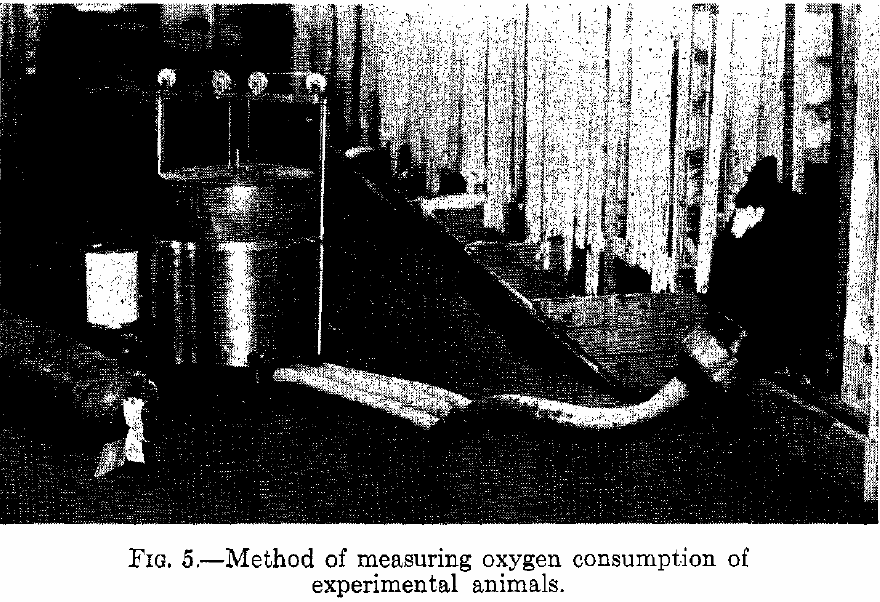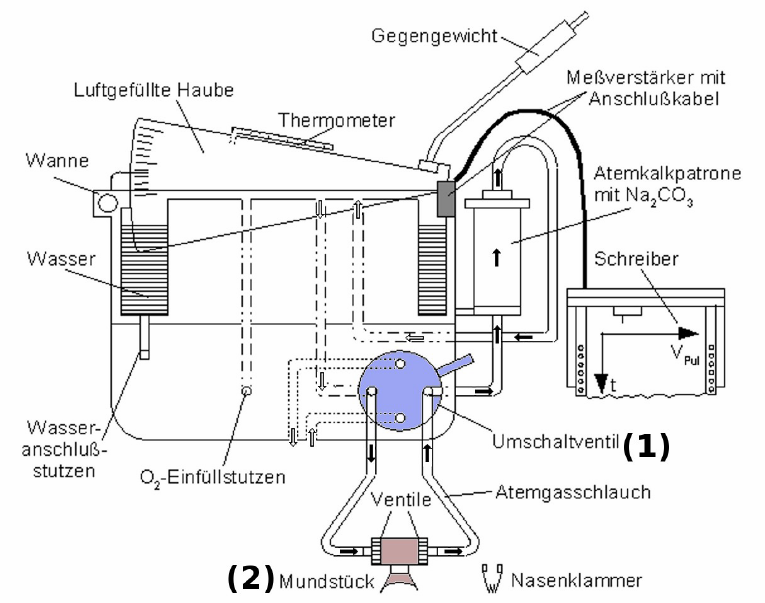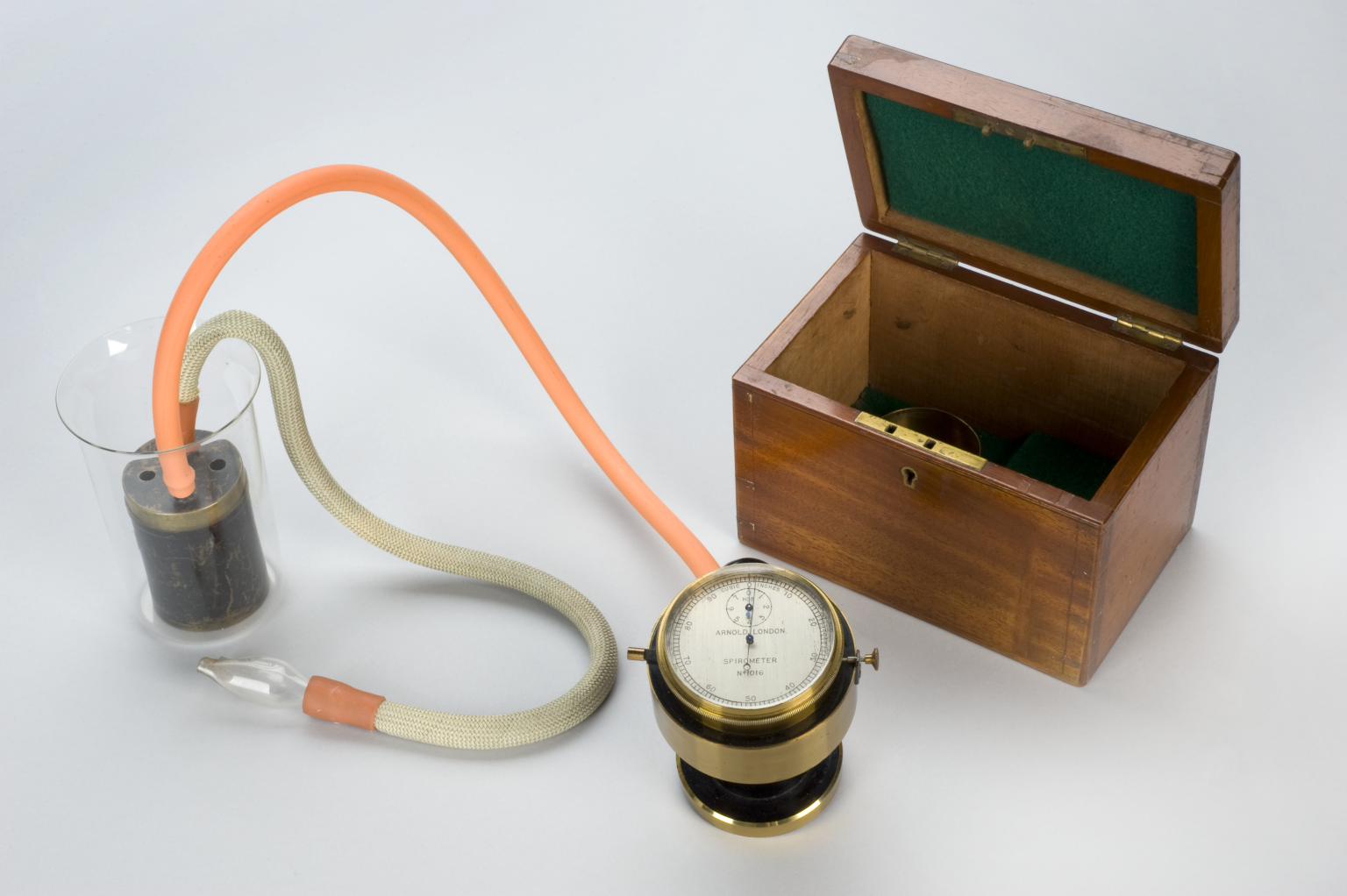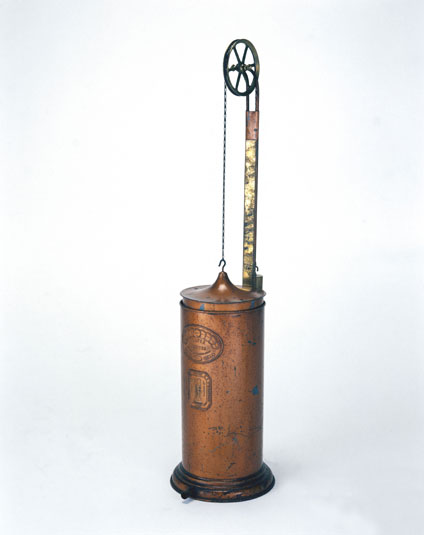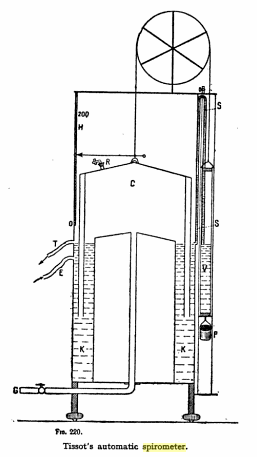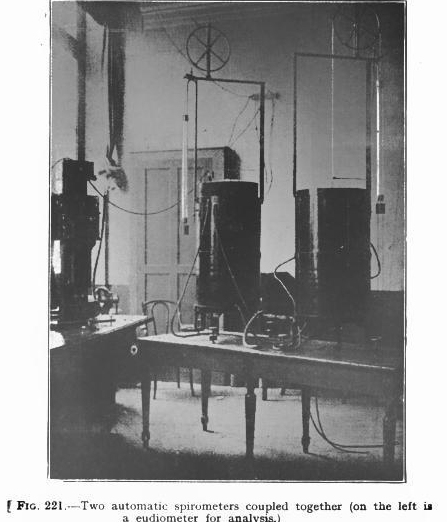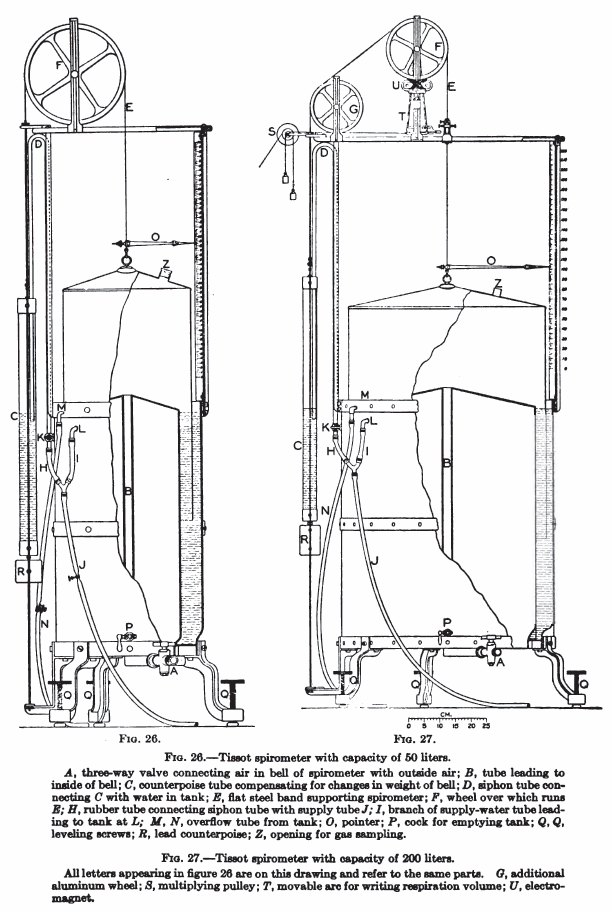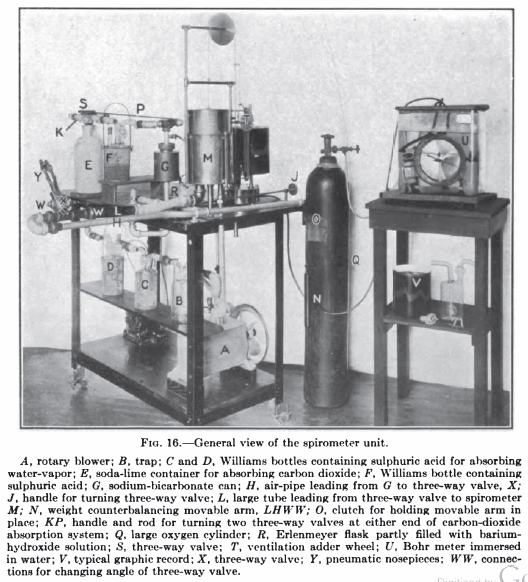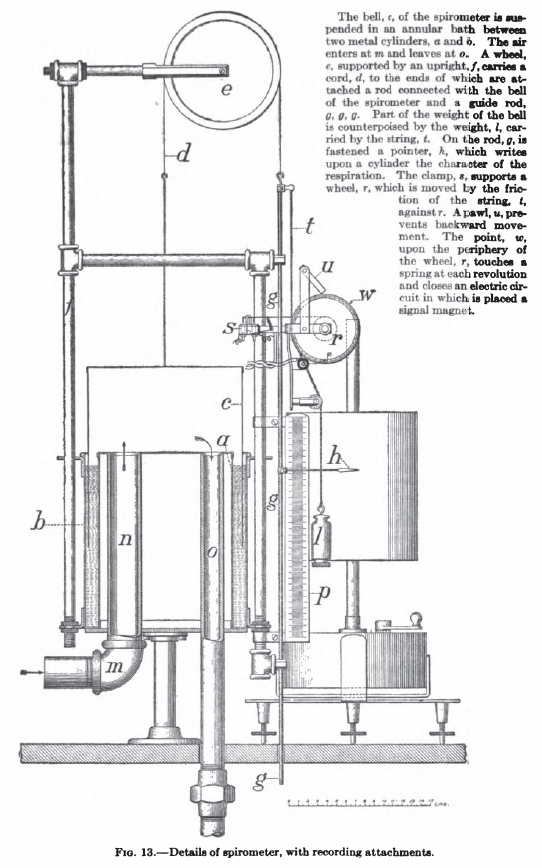“The use of this latter-type spirometer is depicted in figure 3. The combustion chamber, A, and motor-blower, C, are connected with the fittings at the bottom of the spirometer. The air is conducted from the combustion chamber through the pipe, b, with it “metal-to-metal” connections, is forced upwards through the soda-lime in the can, B, and passes into the spirometer bell, D, and then down around the soda-lime can and out through the fitting coneecting directly with the blower, C.” Taken from Benedict G, Fox EL. A method for the determination of the energy values of food and excreta. pg 795. Publication unknown.
All posts by Richard Johnston
Collins Clock-kymograph, 1934
Krogh Spirometer
Spirometer, Lowne Portable, 1890
This portable spirometer is made of brass, rubber and glass in a mahogany case. It was made by Arnold and Sons of London. The patient’s breath bubbled up a water-filled collecting glass and pushed up a sliding weight. A scale on the attached spirometer indicated the capacity of the lungs. Scientific instrument maker, Robert Mann Lowne (1844-1929) patented this portable spirometer in 1865.
from http://www.sciencemuseum.org.uk/broughttolife/objects/display.aspx?id=92216
Spirometer, Walter Levoyer, 1876, Paris
Made by Walter Lecuyer, Paris, of iron and brass construction. Approx 1876
from http://www.sciencemuseum.org.uk/images/I019/10284273.aspx

